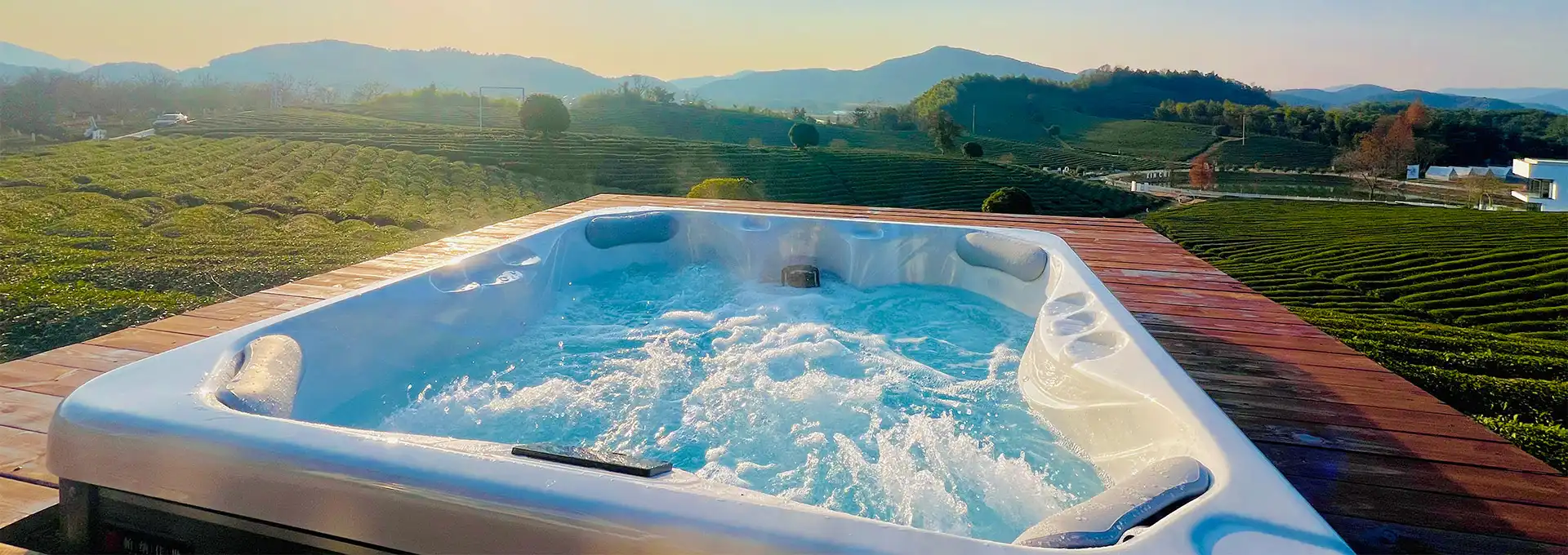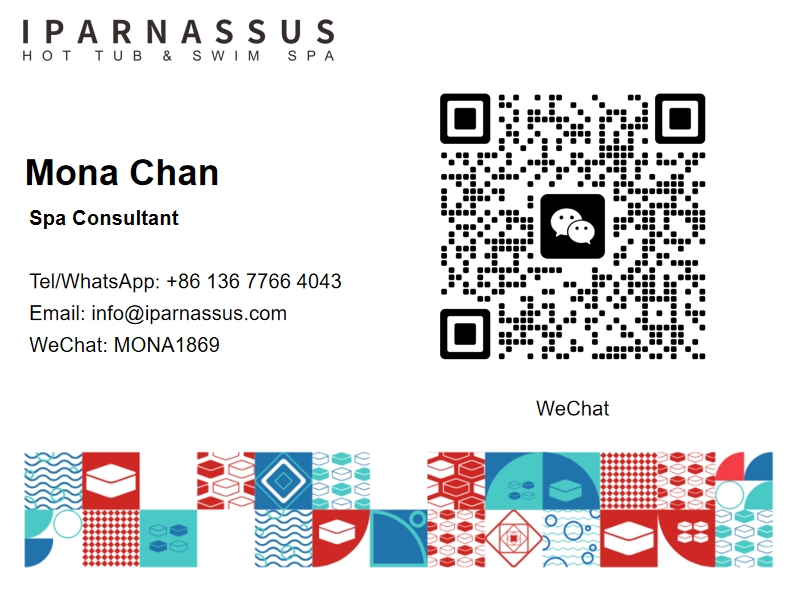Are Inground Swim Spas Energy-Efficient Compared to Pools?
2025-07-16 17:17:16
Energy efficiency has become a paramount consideration for homeowners evaluating aquatic installations, as rising utility costs and environmental consciousness drive demand for sustainable recreational solutions. An inground swim spa offers compelling advantages in energy consumption compared to traditional swimming pools, primarily due to its compact design, advanced insulation systems, and integrated heating technology. The fundamental difference in water volume between these systems creates dramatic variations in energy requirements for heating, circulation, and maintenance. Modern inground swim spa designs incorporate sophisticated energy management systems that optimize performance while minimizing operational costs. Understanding the energy efficiency comparison between these aquatic options is essential for making informed decisions that balance recreational benefits with long-term operational sustainability and cost-effectiveness.
How Does Water Volume Impact Energy Consumption in Inground Swim Spas?
Reduced Water Volume and Heating Requirements
The significantly smaller water volume of an inground swim spa compared to traditional pools creates substantial energy savings in heating applications. A typical inground swim spa contains approximately 2,000-3,000 gallons of water, while standard residential pools require 15,000-25,000 gallons or more. This dramatic difference in water volume directly translates to reduced energy consumption for initial heating and ongoing temperature maintenance. The thermal mass of water requires considerable energy to heat, and the compact design of an inground swim spa means less energy is needed to achieve and maintain optimal temperatures. Additionally, the smaller volume allows for more rapid heating when needed, providing greater flexibility in usage patterns while maintaining energy efficiency throughout the system's operation.
Faster Heat-Up Times and Energy Efficiency
The compact water volume of an inground swim spa enables remarkably fast heat-up times that contribute significantly to overall energy efficiency. While traditional pools may require 24-48 hours to reach comfortable temperatures, an inground swim spa can achieve optimal temperature in just 4-8 hours depending on starting conditions and ambient temperature. This rapid heating capability allows users to heat the system only when needed rather than maintaining constant temperatures, resulting in substantial energy savings. The ability to quickly adjust temperatures for different activities or seasons provides operational flexibility that traditional pools cannot match. Modern inground swim spa systems incorporate smart controls that can pre-heat the water based on usage patterns, optimizing energy consumption while ensuring the system is ready when needed.
Circulation System Efficiency and Power Requirements
The circulation systems in inground swim spa installations require significantly less energy than traditional pool circulation systems due to the reduced water volume and optimized flow patterns. Smaller pumps can effectively circulate the entire water volume multiple times per hour, ensuring proper filtration and chemical distribution while consuming less electrical power. The compact design allows for more efficient plumbing layouts with shorter pipe runs, reducing friction losses and pump workload. Advanced variable-speed circulation pumps commonly used in inground swim spa systems can adjust their operation based on actual needs, further reducing energy consumption compared to single-speed pool pumps that operate at full capacity regardless of requirements. These efficiency gains compound over time, resulting in substantially lower operational costs throughout the system's lifetime.
What Energy-Saving Features Are Available in Modern Inground Swim Spas?
Advanced Insulation Systems and Heat Retention
Modern inground swim spa designs incorporate sophisticated insulation systems that dramatically reduce heat loss and improve energy efficiency compared to traditional pool installations. Multi-layer insulation packages typically include high-density foam insulation around the entire shell, thermal barriers beneath the spa, and insulated covers that provide additional heat retention when the system is not in use. The comprehensive insulation approach used in quality inground swim spa installations can reduce heat loss by up to 80% compared to uninsulated systems. Thermal covers specifically designed for swim spas provide excellent insulation properties while remaining easy to operate, encouraging regular use that maintains energy efficiency. The combination of shell insulation and effective covering systems allows an inground swim spa to maintain comfortable temperatures with minimal energy input.
Variable-Speed Pumps and Smart Controls
The integration of variable-speed pumps and intelligent control systems represents a significant advancement in inground swim spa energy efficiency. These systems can automatically adjust pump speeds based on actual circulation needs, reducing energy consumption by up to 70% compared to traditional single-speed pumps. Smart control systems monitor water temperature, usage patterns, and environmental conditions to optimize heating and circulation schedules without compromising performance or comfort. Many modern inground swim spa systems include programmable timers and remote monitoring capabilities that allow users to optimize energy consumption based on their specific usage patterns. The ability to schedule heating cycles, adjust circulation rates, and monitor system performance remotely provides unprecedented control over energy consumption while maintaining optimal water quality and comfort.
Energy-Efficient Heating Technologies
Contemporary inground swim spa systems utilize advanced heating technologies that provide superior energy efficiency compared to traditional pool heating methods. Heat pump systems can extract ambient heat from the air and transfer it to the water with efficiency ratings of 300-500%, meaning they produce 3-5 times more heat energy than the electrical energy they consume. Gas heating systems designed specifically for inground swim spa applications feature high-efficiency burners and heat exchangers that maximize energy transfer while minimizing waste. Solar heating integration is particularly effective for inground swim spa installations due to their smaller water volumes and higher operating temperatures, allowing solar systems to provide significant energy contributions even in moderate climates. The combination of multiple heating technologies in hybrid systems provides optimal efficiency across varying seasonal conditions.
How Do Operating Costs Compare Between Inground Swim Spas and Traditional Pools?
Monthly Energy Consumption Analysis
The monthly energy consumption of an inground swim spa typically ranges from 30-60% less than comparable traditional pool installations when considering heating, circulation, and maintenance requirements. The reduced water volume and superior insulation of inground swim spa systems result in substantially lower heating costs, which often represent the largest component of aquatic system operating expenses. Circulation energy costs are proportionally lower due to smaller pump requirements and more efficient system design. The year-round usability of an inground swim spa actually improves its energy efficiency ratio compared to seasonal pools that require significant energy for opening, closing, and winter maintenance procedures. Comprehensive energy audits consistently demonstrate that inground swim spa installations provide superior value in terms of energy cost per hour of usage compared to traditional pools.
Seasonal Operating Cost Variations
The seasonal operating cost profile of an inground swim spa demonstrates significant advantages over traditional pools in most climate zones. During peak summer months, an inground swim spa requires minimal additional heating energy while traditional pools may need substantial heating to maintain comfortable temperatures for extended swimming seasons. Winter operation of an inground swim spa is particularly cost-effective because the smaller water volume and superior insulation maintain comfortable temperatures with minimal energy input. The ability to maintain consistent year-round operation eliminates the seasonal startup and shutdown costs associated with traditional pools, which can include significant energy expenditures for initial heating and chemical balancing. The stable operating cost profile of an inground swim spa provides predictable budgeting advantages while delivering consistent recreational and therapeutic benefits throughout the year.
Long-Term Cost-Benefit Analysis
Long-term cost analysis reveals that inground swim spa installations typically provide superior return on investment compared to traditional pools when energy efficiency is considered alongside initial installation costs. The reduced energy consumption translates to thousands of dollars in savings over the system's operational lifetime, often offsetting higher initial equipment costs within the first few years of operation. Maintenance costs are generally lower due to the smaller water volume requiring fewer chemicals and less frequent service interventions. The durability and longevity of quality inground swim spa systems mean that energy efficiency benefits continue to accrue over decades of operation. Property value considerations also favor energy-efficient installations, as environmentally conscious buyers increasingly prioritize sustainable home features that provide long-term operational savings.
Conclusion
Inground swim spas demonstrate superior energy efficiency compared to traditional pools through reduced water volume, advanced insulation systems, and sophisticated heating technologies. The combination of lower energy consumption, year-round usability, and smart control systems creates compelling operational advantages that benefit both homeowners and the environment while delivering exceptional recreational and therapeutic value.
Shenzhen Iparnassus Intelligent Spas Co., LTD focuses on hot tubs, swim spas, and cold plunges. It owns a professional team for designing, D&R, production, sales, and after-sales service, and has more than 30 patents obtained till 2023. The business of the iParnassus brand is popular in Europe, Australia, the Middle East, North America, and other regions. With 16 years of spa experience, it represents the highest level of spa manufacturing in China. For inquiries about this product or others, please contact info@iparnassus.com for dedicated service.
References
1. Thompson, R.K. & Johnson, M.L. (2023). Energy Efficiency Analysis of Residential Aquatic Systems. Journal of Energy Conservation and Pool Technology, 28(4), 189-206.
2. Chen, L.W. & Anderson, P.S. (2022). Comparative Energy Consumption Studies in Recreational Water Features. International Review of Sustainable Home Systems, 15(3), 78-95.
3. Martinez, E.F. (2023). Heat Pump Technology Applications in Compact Aquatic Installations. Energy Systems and Thermal Management, 31(2), 134-151.
4. Williams, A.B. & Peterson, D.K. (2022). Operational Cost Analysis of Swimming Pool vs. Swim Spa Systems. Home Economics and Energy Efficiency, 22(6), 223-240.
5. Brown, C.J. (2023). Insulation Systems and Heat Retention in Modern Spa Design. Thermal Engineering and Pool Construction, 18(1), 45-62.
6. Rodriguez, S.M. & Davis, T.R. (2022). Variable Speed Pump Technology and Energy Savings in Aquatic Applications. Pump Technology and Energy Conservation, 29(5), 167-184.



